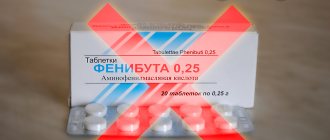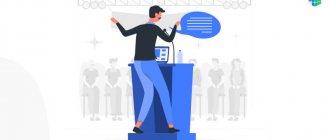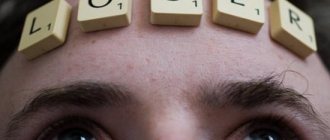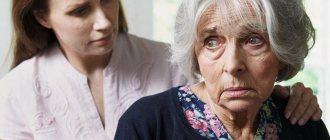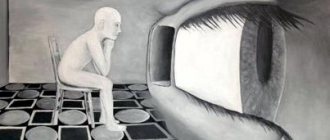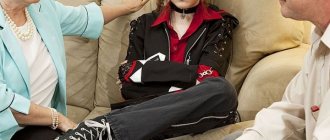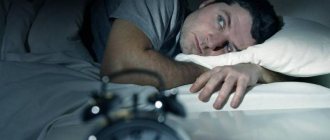Characteristic
PAs are repeated both at the psychological and physical levels, accompanied by severe symptoms.
They occur in both men and women, but more often women suffer from painful symptoms. Age doesn't matter. Perhaps, only with a decrease in background hormonal tension in the postmenopausal period does the severity, intensity and frequency of panic attacks decrease. Panic attacks are different from the specific symptoms of obsessive-compulsive disorder. With OCD, a person is depressed by the idea that he is slowly losing control of himself or will soon die, and there is also a fear of suicide.
Anxiety attacks can be spontaneous and situational:
- In the first case, attacks appear for no apparent reason.
- The second type of PA is provoked by phobias.
- People dependent on alcohol, tobacco or medications experience conditional attacks.
Psychiatrists and specialists in the field of borderline states who work in the neurosis clinic understand these subtleties.
Medicine for VSD
The prospect of going to the next hospital to have my tonsils removed did not make me happy. It was the height of a hot sunny summer, the month of August. I put off this decision. And the more time passed, the less desire remained to do this. It is not for nothing that popular wisdom says that removal of the tonsils is the second castration.
In Soviet times, television had no meaning for a teenager. There were no computers. The street and hanging out with peers were the main entertainment for young people. The more I walked, the better I felt. Heart pain began to occur less frequently. By the end of the summer, I gave up any thoughts about removing my tonsils. A long stay outside and swimming in the river did their job, I began to feel better.
With the onset of autumn, I began to look for ways to finally get rid of the disease. My favorite magazines at that time were “Physical Culture and Sports” (FiS) and “Sports Life in Russia”. It was there that I found my way to get rid of VSD.
Providence sent its help. I came across an article by Yu.P. Vlasov about his medical history, and how he pulled himself out of it with training. For me it was like a revelation. I saw my way to regain my lost health. It never even occurred to me then that our illness was common. His symptoms were too severe.
A comment . 30 years later, when VSD came into my life again and I came across Yuri Vlasov’s books “Formula of Courage” and “The Price of Life,” I received help from him for the second time. These books were the best medicine for me. I had almost all the symptoms he described (except for the most severe ones). Reading what he had to go through and comparing it with myself, my faith grew stronger that I too could cope with my illness. Which is what ultimately happened. (Read about this here - How to cure VSD. My experience)
When you receive help from another person, you want to give it to others. It’s like a spiritual baton that you pass on, once you receive it. This is what makes us Human.
Why do fears appear?
Usually, fears caused by vegetative-vascular dystonia are groundless. A person begins to feel panic with obsessive thoughts about negative experiences of the past or future. The release of the hormone adrenaline into the blood constantly increases, which aggravates the panic attack and leads to a vicious circle, which is difficult to get rid of.
Causes of phobia
The causes of thanatophobia in VSD have not yet been fully studied. A large role is given to the influence of genetic predisposition and the influence of society. People with increased impressionability and excitability, self-doubt, and suspiciousness are prone to this phobia. The reason for the development of a pathological condition can be:
- Death of a loved one.
- Tragic news on television involving murders or disasters.
- Fear of losing control over your own life.
- Fear of God's Judgment after death among religious people.
- Anxiety for the life of the baby and the thought of what will happen to him after the death of his parents - among pregnant women or single mothers.
- Disappointment in life from unfulfilled hopes among people after 35 years.
- The inevitable approach of death in older people.
Thanatophobia can lead to other phobias that complicate the course of the disease, for example, agoraphobia (avoidance of a place), social phobia (avoidance of social contacts), zoophobia (fear of animals), etc. Depressive disorders often appear.
Features of the fear of death
Fear of death is a natural state. Every living creature has an instinct of self-preservation. But panicky fear of death, which contributes to the emergence of obsessive thoughts and vegetative crises, requires the attention of a psychotherapist.
“I’m 27, I have a fear of death” - this is how patients begin their “confession” during a session with a psychologist. Such a person is haunted by the fear of dying.
What is the fear of death called? This phobia is called thanatophobia. People belonging to the thinking type suffer from it.
People who are haunted by the fear of death during VSD are mainly divided into two types: those who themselves are afraid of dying, and those who are afraid of the death of loved ones.
This is how we can formulate the key to understanding this problem.
Uncontrollable fear is considered a protective reaction of the human body to a threat. There is a strong release of excess stress hormones – cortisol and adrenaline – into the blood. In people with VSD, panic attacks occur due to:
- hormonal imbalance;
- exacerbation of chronic diseases;
- attacks of anxiety and depression;
- against the background of phobic conditions.
The genetic principle works only in 16% of cases. But if one of the parents has symptoms of this pathology, there is a chance that the child will grow up anxious and nervous if he is not raised.
During puberty, adolescents develop PA. The main cause is considered to be neuroregulatory imbalance. Puberty is characterized by:
- emotional instability;
- suspiciousness;
- increased level of anxiety.
Attacks are often provoked;
- intellectual fatigue;
- grueling sports training;
- problems at school;
- difficult relationships with parents.
Women who have crossed the forty-year threshold also experience PA. They often accompany menopausal symptoms and are associated with a decrease in estrogen levels. The main trigger is considered to be instability of blood pressure.
When VSD is combined with cervical osteochondrosis, the patient is prescribed physiotherapeutic procedures. He is sent for sessions of electrophoresis, magnetic therapy, and ultrasound. This brings relief both to the course of osteochondrosis and has a beneficial effect on VSD.
Sometimes anxiety attacks occur against the background of a cold or after it. Appearing during ARVI, they are characterized by less severity. This is explained by the fact that against the background of a real existing disease, the body is busy with it, and there is simply not enough strength to panic. After a cold, attacks worsen.
Deadly or not
Patients with VSD are often frightened by the thought of a fatal panic attack.
- These attacks do not cause serious harm to health. Only serious mental discomfort arises and depression develops.
- Danger is spoken of only when suicidal thoughts are present, and they can be realized when the patient is in a state of passion.
In some people, VSD occurs without attacks. This is explained:
- change of place of residence;
- growing up;
- changing attitudes towards the disease;
- the fact that the disease is in remission (This condition often lasts for years. But when a traumatic situation appears, panic attacks return).
Onset of the disease
I grew up as an ordinary Soviet teenager. Almost my entire life, starting from childhood, was without my father’s upbringing. Alcohol destroyed my family (my father drank) and my mother raised me. Brought up is a strong word. She was at work almost all the time, and I was left to my own devices. I was raised by the street and also by reading books. In the eighties there was a lot of interesting literature, which my young mind eagerly absorbed.
Still, the street and peers had a stronger influence on character than self-education through reading. Therefore, teasing and jokes with peers were as natural as breathing.
My “acquaintance” with VSD began after the eighth grade, when I was only fifteen years old. That summer I was left to my own devices and lived alone. Mom tried to arrange her personal life, and of course my teenage egoism could not accept this.
She came for the weekend, checked that everything was okay with me, then left again, and I was again left to my own devices. I was just glad of this. The best freedom for a teenager is freedom from their parents.
VSD came into my life suddenly. There was nothing that was supposed to help her. I did not suffer from viral infections and did not experience physical or mental stress. The only thing is that my body (like every teenager) experienced a hormonal imbalance, turning me from a youth into a man.
Why is it dangerous?
Being in constant stress caused by fears during vegetative-vascular dystonia is dangerous for a person. He becomes hypersensitive, irritable, nervous and suspicious, which leads to limited social contacts and interferes with self-realization. The result of panic attacks can be a hypertensive crisis, which, if not properly treated, can lead to a stroke or heart attack.
A person with VSD, suffering from phobias and obsessive thoughts, acquires somatic and psycho-emotional symptoms. In combination with the symptoms of vegetative-vascular dystonia, they deplete the nervous system and deprive a person of normal life activities. The situation gets worse if a person refuses to go to a psychotherapist and pushes away those who are trying to help him, which is caused by increased paranoia.
Main reasons
To understand how to defeat VSD on your own, you first need to determine the factors that led to the development of this neurosis. There is a possibility that the disease was transmitted to a person from close relatives. Vegetative-vascular dystonia is very often diagnosed in children and adolescents. However, such a condition can also be explained by the transition period of a boy or girl. At this stage of life, young people suffer from excessive emotionality.
Also, a nervous environment often leads to nervousness. If a person is under stress for a long time, then it is not surprising that his nervous system suffers. In this case, we can talk about problems at work, at school, family, etc. Women experiencing postpartum depression often face panic fears. It is extremely important for them to figure out how to defeat VSD. When breastfeeding (breastfeeding), a woman runs the risk of losing milk due to nervousness.
Typical fears
The presence of panic attacks negatively affects a person’s mental state. Often those suffering from VSD are afraid to walk, meet people, or attend cultural events.
Fears with VSD are varied. But more often, patients are afraid of dying suddenly, going crazy, or causing harm to loved ones.
Relatives have little understanding of a person suffering from this disease. His problems seem far-fetched to them.
This fear occurs more often in women than in men.
- Horror is caused not so much by the inevitability of death, but by physical suffering before departure to another world. This symptom more often “gets” people suffering from cancerophobia, who often experience panic attacks against this background.
- Some are susceptible to "confused" fears. Even if there are no prerequisites, they are afraid that someone close to them or themselves will one day get cancer and die.
- Another reason for anxiety attacks is fear of the unknown. A person worries about what awaits him after completing his earthly journey. Instead of simply thinking about this topic, people are afraid of the unknown.
We invite you to familiarize yourself with: What is the difference between kudesan forte and kudesan?
Here it is appropriate to quote a statement from one of the heroes of the science fiction stories of the great Polish writer and philosopher Stanislaw Lem: “... he was very surprised that earthlings are very worried about what awaits them after they are no longer will become, but they are not at all concerned with the fact that they once did not exist at all.”
In anxious, suspicious natures, the fear of death during VSD is justified by an unconscious desire to control the life of oneself and those of loved ones.
- In an effort to stop the inevitable, they fanatically adhere to the demands of astrologers and healers, and force those for whom they are worried to do the same.
- Anxiety attacks are often accompanied by rituals. The patient is confident that by performing this or that action, he is protecting himself and his loved ones from death.
This is how OCD, or obsessive-compulsive disorder, begins.
When a person is extremely anxious, their body prepares to fight and flee. This is explained by the distribution of work between different parts of the brain, and at the same time the cerebral cortex works less intensively.
The fear of losing control over their behavior affects people who strive to regulate all life processes. Such individuals are called perfectionists. They have a clear plan for the near and long term.
The desire for total control is most often unconscious. Due to his conflict with reality, a person develops panic attacks and obsessive fears.
My pill for VSD
In the fall, the weather deteriorated and walks no longer had the healing effect that I felt in the summer. The symptoms of VSD began to bother me again. Although my heart no longer hurt so much, I began to experience arrhythmia and my heart rhythm (pounding in the chest) was unnaturally strong. But the depression passed. This state of the body could be called the beginning of remission.
Inspired by the experience of Yuri Vlasov and in order to finally get rid of an unknown disease (I repeat, at that time I did not know that it was VSD), I decided to start training. Having picked out a set of exercises for athletic gymnastics in magazines, I went to buy my first dumbbells. They weighed 4kg. With them my home training began.
Gradually I began to get involved in classes. It was athleticism that gave me hope of getting rid of the disease. I felt better after every workout I did. After them, I felt a surge of vitality and faith in a speedy recovery.
Four kilograms were quickly mastered by me. The growing body required more load. I went to the sports store again. It became like family to me - like a clinic for a patient. It was there that they sold that miracle pill called dumbbells.
The next dumbbells were 6kg. But they also quickly became boring to my body. Then there were 8 kg, 10 kg. and 12kg. They didn’t sell larger weights back then, so I bought my first 16kg. weights. However, my body quickly got bored with the weights. But I found a solution for myself on how to increase the load. I started tying dumbbells to the weights with electrical tape. Gradually increasing the weight to 24 kg. It was with these “dumbbells” that my studies took place in the future.
My home workouts began on schedule at six o'clock in the evening three times a week. They lasted 2.5 - 3 hours. The first year I did them after studying at school. In the next two years, when I started working at the VEF radio plant, I became so interested in athletics that I rarely missed my classes. I even had to postpone a date with a girl for this reason. It was all so serious for me.
And although I did not develop large muscles, my thin bones did not allow this. But among my peers I was distinguished by my strength. So at the factory (where I worked) someone carefully made a non-standard weight weighing 36 kg, which I could easily lift several times. Something many adults who did not exercise could not do. In addition to strength indicators, I could easily perform two-arm strength exercises on the horizontal bar ten times in a row and do push-ups with my fists a hundred times.
A year later, I still had mild symptoms of VSD. Two years later (from the onset of the disease) they too passed. Three years later, having passed a medical examination, I was declared completely healthy and went into the army to serve the Motherland.
How to get rid of fears with VSD?
To get rid of obsessive thoughts that are the cause of your suffering, internal problems, and delusions, it is important to constantly work on yourself.
To eliminate obsessive feelings, you can use the following techniques:
- Meditation: despite the large time investment, it allows you to learn self-soothing.
- Switching your own attention: distract yourself from experiences by including each of your senses in the work. This method is easy to use, but gives only a short-term effect. Add activity to your own life: start playing tennis, walk in nature more often, don’t overeat before bed, do what you love with loved ones.
- Get rid of physical tension: muscles that are in constant tone cause a response from the psyche, expressed in the appearance of obsessions.
- That’s why it’s so important to be able to relax your body using modern relaxation techniques.
- Don’t forget about communication: meet interesting people more often, expand your own circle of acquaintances, discuss only positive news with friends.
- Minimize until a certain time watching TV and social networks, which are full of messages about tragedies and disasters: you should not give your brain food for creating thoughts about death.
- Read less about vegetative-vascular dystonia on special forums where the same people share their own feelings and symptoms: there is a high probability that a person may even find signs of the disease that he did not have before.
- Don't try to keep your own thoughts under control: if a person tries with all his might not to think about something, he will most likely think about it incessantly.
- Treating not so much your own body as your soul: high spirits, optimism in your outlook for the future is the path to getting rid of obsessive anxiety.
When embarking on the path of combating obsessive thoughts that so often appear in the presence of vegetative-vascular dystonia, one should remember that it is impossible to control all the processes occurring on earth.
It is unlikely that a disaster will occur if a person does not turn around three times before leaving home or chooses socks of the wrong color as required. A person cannot control his own thinking, just as thinking should not completely control him.
One very important conclusion is that if you can’t fight fear, then you need to fight its cause.
To effectively deal with fears during VSD, you must first recognize the problem and find the source of the obsessive thoughts that cause the panic attack. Contacting a qualified psychotherapist will allow you to restore peace of mind, analyze your life and understand the groundlessness of your fears.
A good option is to attend group psychotherapy, where people with VSD share their experiences and support each other, which significantly speeds up the rehabilitation process. A strong determination to fight panic, a desire to change established ways of thinking and getting rid of self-doubt are three important factors in the fight against phobias.
For the fifth day now, my life has changed. If I'm afraid, I tell myself that I'm afraid. It's normal to be afraid. This is an absolutely healthy reaction of the body. I allow her to live in my body - and for some reason she leaves me in those same minutes, making way for plans. Fortunately, fear is also energy. And awareness of this energy, and love for it, allows it to be redirected to other activities. As soon as I start to feel afraid, I know it's time to do something.
My main postulates for deliverance are very simple. Moreover, despite their simplicity, absurdity and nonsense (some kind of nonsense, really), THEY WORK. You have nothing to lose by trying this opportunity to cope with fear. Just try it.
We suggest you read: How to take Bisoprolol before or after meals
1. Any fear must be accepted. Sit down and tell yourself: “I’m afraid, I’m afraid, I’m afraid.” I accept my fear, I love my fear, thank it for helping me appreciate and cherish my life. I'm a coward, a coward, and that's okay. I'm afraid and that's good. Stop fighting him. The more you fight, the stronger he is.
2. If fear makes you tremble, don't fight the trembling, just start trembling even more. As intense as you can. Try to feel and dissolve in this trembling, without thinking about anything, become a trembling and enjoy it.
3. If VSD occurs, thank him. In fact, all these various symptoms are signaling to you that it is time to rest. Go to bed earlier. Eat. Listen to pleasant music. My symptoms—a sense of danger—helped me respond in time to the situation involving my daughter.
4. Fear is the antagonist of love. When you are afraid, there is no love in your soul. There is selfishness and self-pity. As soon as you look around in the process of trembling and accepting your own feelings, your fear, and think about who you can make happy with your attention and care, part of the fear will go away and love will come to replace it.
5. Just imagine that these are your last minutes or hours in life. Do you really want to spend them like this, shaking like a mouse in a hole? Or maybe you can try to spend time on something more useful for others or yourself, so that you remember it in the end? Since these are the last minutes. Usually at this phase you feel a rise and a surge of good positive emotions of generosity, kindness and generosity, you are distracted and now you have forgotten about everything. Love has appeared in your heart, and it inspires.
6. Now take a sheet of paper and divide it into two halves. On the left, write down the fear of death and all your fears and phobias. And on the right write all your activities and favorite activities. Such as home (its comfort, etc.), family (write who exactly), work (write what exactly you love), hobbies and favorite hobbies (list in detail, remember something from childhood - for example, your favorite ice cream) , write down yourself (what you want to do for yourself - a pedicure, a hairstyle, maybe classes in the pool, everything that brings you joy). Your dreams and aspirations (list). Have you recorded it?
After you have written everything, and the right column turns out to be much more impressive, much larger than the left one, evaluate with a sober look slightly from afar: - Is the left column worth the loss of everything that is in the right one? Did you like the answer? So maybe it's time to live in the present and let go of the situation, because you won't be able to keep it under control anyway.
Good luck to you. My acquaintances do not recognize me - the joy of every minute, every day spent in the circle of my favorite things from the right column awakened in me, because there is so little time - and I need to spend it with maximum benefit for myself and those around me while I have it.
Love you in your life! Remember! As soon as fear creeps into you, it means it’s time to return love back to your heart. Good deeds, favorite things, warm-hearted people and relationships.
Treatment options
One way or another, it is impossible to live with frequent uncontrolled attacks of panic fear. The only doctor who can help you is a psychologist. But it's worth trying to solve the problem yourself. It is better to start treatment after the first attacks of fear of death - this way it is more likely that you will not drive yourself into constant panic. In the early stages, the best hope is that you will recover, despite the nature of the panic attacks.
Understand and accept yourself
You need to realize what exactly makes you afraid, what kind of trauma. You need to accept yourself no matter what. You need to deal with this.
Adjust your lifestyle
Practice time management and take time for proper rest. Stop treating your body like a robot - it is not a machine, so it needs rest.
Contact a specialist
If everything is really bad, contact a good psychologist who will work through all your fears and problems with you. For example, Nikita Valerievich Baturin is a specialist who has been doing similar things for more than 8 years.
Stop being afraid of seizures
In fact, as stupid as it may sound, they are safe. You won't die if you go outside and talk to someone. Everything is in your head and you need to realize it. There is no such thing as death from a panic attack.
Learn to relax
There are many techniques that will help you relax, recover and avoid the next attack. Do yoga. Even if you don't have the opportunity to take classes on relaxation and meditation, find training videos on YouTube.
Drug therapy
It’s not necessary, but you can take sedatives, preferably something light and herbal. But! Don't self-medicate! Before taking medications, consult your doctor so as not to worsen the situation.
Important! Don't try to calm yourself with alcohol or drugs. Even if you feel relief, it will not last long, because the problem itself has not been eliminated. You will again and again be faced with panic attacks and again seek salvation. This is a direct path to addiction. Don't make your condition worse!
Try to distract yourself
If you have an attack, try to distract yourself with something. Breathe into your hands and count, try to restore your breathing. Look out the window, listen to the noise, count the clouds, cars or trees. Warn about attacks of fear of death of loved ones - it is during attacks that support is important for a person. You won’t ask for this, so discuss every moment in advance. Let your loved ones talk to you, hug you, and start asking stupid spontaneous questions to get you out of your stupor. Under no circumstances should you frighten or shock a person during an attack! This will make things worse.
Clinical manifestations
The reaction of the human body during PA is similar to the symptoms of more serious diseases. Vegetative dystonia with panic attacks is characterized by:
- increased heart rate or tachycardia;
- tremor;
- chills;
- dizziness;
- lack of air;
- pain in the heart area;
- shortness of breath.
There is panic. The patient feels as if he is about to lose consciousness. Sometimes thoughts get confused. The attacks are caused by traumatic moments, the existence of which the patient knows and always tries to avoid.
- Teenagers suffering from VSD become irritable, quickly get tired, and complain of causeless weakness. The attack comes suddenly. The feeling of heat is accompanied by a strong heartbeat. The duration of one attack is about 10 minutes. Typically, anxiety attacks occur at night.
- The patient's arms and legs go numb. Smooth muscle spasms occur in the stomach and intestines. Some guys feel sick and vomit. These symptoms are sometimes combined with involuntary urination. There is a strong fear of death.
Frequent panic attacks are fraught with suicide attempts. If an attack of PA occurs in front of people, the psychological state of the patient is aggravated, as well as the feeling of personal inferiority.
Sometimes panic attacks manifest themselves as painful sensations of varying localization and intensity. Headache is present constantly or periodically. Atypical manifestations are accompanied by mental disorders resembling seizures.
As time passes, attacks occur more frequently. Agoraphobia develops (fear of being in open places where no one will provide help). Signs of dysfunction of the gastrointestinal tract appear, and dyspeptic disorders occur. Skin tone changes. In women, pinkish or reddish nerve spots form. They are localized on the neck or chest. The attacks are accompanied by a feeling of a lump in the throat.
We suggest you read: Types of bleeding and first aid
Drugs
The pharmaceutical industry offers a number of medications that will help reduce anxiety, normalize heartbeat and prevent the release of adrenaline into the blood. If a panic attack has begun, taking 1-2 Validol tablets, 1-5 Glycine tablets or any other sedative will help shorten its duration and reduce the intensity of the attack.
A single dose of 30-50 drops of Corvalol diluted in a small amount of water copes well with a panic attack. If you have tranquilizers - Gidazepam or Phenazepam, it is recommended to take 1-3 tablets and wash them down with a glass of water. In the absence of low blood pressure, you can put 1 tablet of “Anaprilin” (at a dosage of 20 mg) under the tongue.
In severe cases, it is possible to take antipsychotics, antidepressants and nootropics, which are taken exclusively under the supervision of the attending physician. A neurologist or psychiatrist should prescribe medications for the treatment of fears in VSD, and their dosage, since self-medication in this disease is dangerous to health. It should be remembered that some types of tranquilizers and antidepressants can be addictive and drug dependent.
Enter your pressure
Move the sliders
What is vegetative-vascular dystonia
This syndrome is a series of malfunctions in the functioning of body systems. Usually, with VSD, the blood supply, cardiovascular system and many other vital organs suffer. Often this variation leads to the fact that the doctor first prescribes one treatment to the patient, but after it turns out to be completely ineffective, he develops a new course of therapy.
To understand how to defeat VSD on your own, you need to understand that this pathology is, by and large, a nervous disorder. It is often compared with panic attacks, but this is not entirely correct. With VSD, the patient does not always experience such symptoms. More often, patients complain of fatigue, frequent colds and other unpleasant symptoms.
Thus, most of the courses of treatment offered by some specialists are ineffective, since the need is to help the person solve the root cause of the disease, and not try to deal with the symptoms.
Vegetative-vascular dystonia is often accompanied by a wave of panic. It even gets to the point that the patient is completely afraid of dying from the disease. This further aggravates his condition. You need to understand that this pathology is not a disease in the classical sense. Most of the harm a person does to himself. To understand how to overcome VSD with panic attacks on your own, you must first recognize that the patient suffers from neurosis. Accordingly, treatment should be aimed at ensuring that a person can learn to control his emotions and not give in to panic.
How to help
To get rid of painful symptoms, you should definitely visit a therapist. If necessary, the doctor will refer you to:
- cardiologist;
- psychotherapist;
- neurologist.
Treatment of panic attacks involves relieving symptoms and preventing the emergence of new anxiety disorders. Acute attacks are treated with medications. But more often the patient is prescribed to attend psychotherapeutic sessions. Courses of psychoanalytic and behavioral therapy help stabilize the condition.
Therapy for anxiety attacks involves going through three stages:
- didactic;
- cognitive;
- behavioral.
The first stage involves finding a logical basis for the attacks. After understanding the clinical manifestations, the doctor decides on further treatment.
In the second stage, regular negative thoughts are replaced by positive ones. Then an algorithm is drawn up, the result of which is the formation of positive thinking in the patient.
In case of vegetative-vascular dystonia with panic attacks, it is worth knowing how to get rid of a sudden acute attack. The patient must clearly understand that he will not die because of this.
- It is important to try to focus on the idea that the deterioration is temporary. Then you should lie face up, stretch out your legs and arms. After relaxing, try to switch to positive thoughts.
- Breathing exercises also help. When you take deep breaths, the brain receives oxygen and the nervous system calms down. It is advisable to breathe with your stomach.
- No matter how difficult it is, you need to smile. This position of the lips is fixed for 2–3 minutes.
- The effect will be better if you slightly sweeten the water. Sugar can be replaced with a spoonful of fresh honey. The main condition is to focus on the process. You can count sips, ponder the taste of the liquid.
- Reading poems, prose or prayers by heart helps to get rid of VSD. The text should have a positive tone. No matter how difficult it is, smile. This position of the lips is fixed for 2–3 minutes.
- A yoga teacher can eliminate the risk of new attacks. Meditation and auto-training sessions help a lot. These therapeutic methods promote psychological relief.
- Swim and walk more.
Treatment of fears
Methods that help get rid of fears:
- Ericksonian hypnosis;
- desensitization;
- behavioral psychotherapy;
- cognitive psychotherapy;
- psychodynamic psychotherapy;
- integrative psychotherapy.
With desensitization, the process of neutralizing negative experiences associated with fears and neuroses is launched. Behavioral psychotherapy sessions help to develop skills of optimal behavior and learn self-control.
During cognitive psychotherapy, the patient's response to a traumatic situation is corrected. Sessions of psychodynamic psychotherapy help to form a new positive understanding of the processes occurring with the patient.
The patient is prescribed long-term psychotherapy. Drug therapy is possible. Prescribed use:
- tranquilizers,
- antidepressants.
Drug therapy
It is useless to treat an incipient attack with medications. None of them can instantly suppress symptoms. The exception is drugs for intravenous administration, for example, Diazepam (Relanium, Seduxen). It and similar drugs help to cope with panic, but for this they call an ambulance.
The effect of the drug begins after 20 minutes, when PA regresses naturally.
In order to shorten attacks, the patient is prescribed the following:
- Anaprilina;
- Corvalola;
- Validola.
These medications are prescribed by your doctor when panic attacks occur frequently. These medications have a sedative effect. With their help, the activity of the nervous system is inhibited. Anaprilin is able to suppress redness, heat, tachycardia and break the vicious circle.
The courses are assigned:
- tranquilizers,
- antidepressants,
- beta blockers.
Some drugs in these groups cause side effects. Therefore, they are prescribed in rare cases. Beta-blockers have a gentle effect. They block the release of adrenaline into the blood. This leads to a decrease in the intensity of panic attacks.
Preventive actions
To prevent panic attacks, you should take a walk in the fresh air every day. The best time for walking is morning. But if vegetative-vascular dystonia is accompanied by insomnia, then it is more beneficial to walk in the evening.
Also, the symptoms of VSD can be eliminated with the help of creativity. More recommended:
- embroider;
- paint;
- sculpt from clay.
Panic attacks, like other overreactions in the body, are susceptible to exhaustion if they are deprived of their substrate.
A strong urge to develop a panic attack is an excessive fear of death. It is known that believers do not have such fear, since their thoughts are occupied with something else: a person must enter the state of death in such a way as to appear before other spheres in a worthy form. This formulation eliminates the very meaning of a panic attack. Therefore, if no medicine works, faith and religious education will help a person.
Tags: get rid of, death, fear
About the author: admin4ik
« Previous entry
